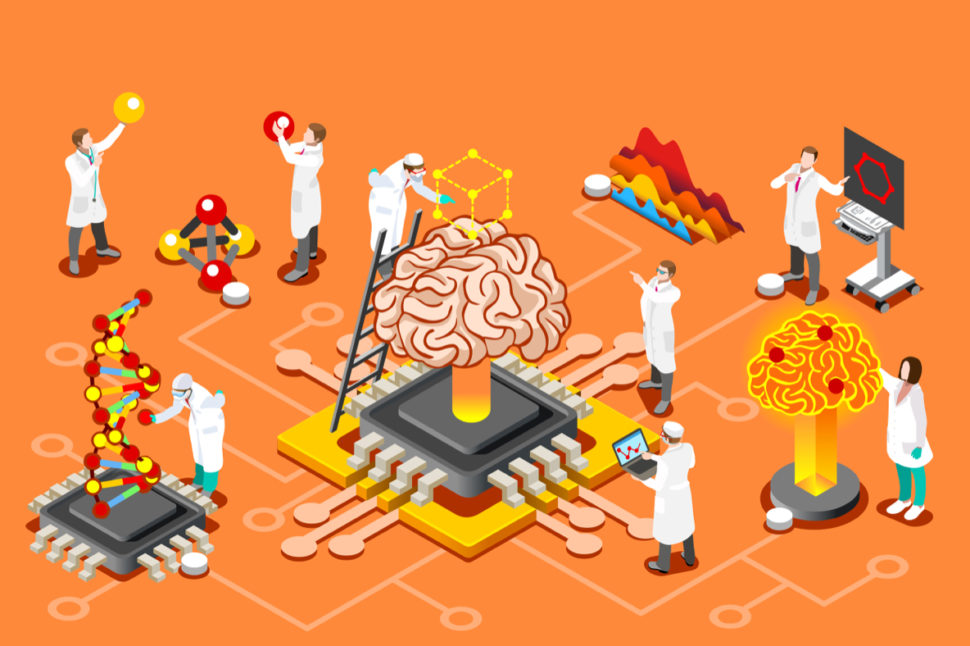AI-assisted surgery, virtual nursing assistants, and the management of administrative workflow are the top 3 most valuable AI applications now taking form in healthcare.
Whether interfering early on in the diagnosis process, managing medical data, assisting health care providers, or helping doctors tailor precise treatments, Health AI is likely to disrupt the healthcare ecosystem from top to bottom.
In this article, instead of focusing on possible future benefits of health AI, we’ll look at how its helping healthcare systems today.
The health AI market is experiencing a boom and is expected to reach a value of $6.6 billion by 2021, up from just $600 million in 2014.
According to a report by Accenture, by 2026, AI applications with “near-term value” could translate to $150 billion annual savings for the U.S. healthcare industry.
Read More: AI Chatbot Defeats Healthcare Professionals in Medical Tests
Below are the top 3 AI applications that are being investigated now in hospitals and hold the most potential:
1. AI-Assisted Surgery
The above report puts robot-assisted surgery at the top of AI applications in terms of the potential value for the healthcare industry.
By 2026, robot-assisted surgeries will amount to savings worth $40 billion, driven by “technological advances in robotic solutions for more types of surgery.”
Besides the generalization of robot assistance to more surgery types, robots themselves will be aided by AI.
Since the FDA approved its use in the year 2000, there are now over 2,700 da Vinci surgical systems easing the work of surgeons in the United States.
AI-powered surgical robots will be more precise, more versatile, and will do way more than just replicating the human surgeon gestures to take total control of surgical procedures.
AI-assisted robots that perform a wide range of minimally-invasive surgeries and enhance their capabilities over time is already a concrete prospect.
A study on 379 orthopedic patients showed that Mazor Robotics’ AI-assisted robotic technology reduced surgical complications by five-fold compared to freehand surgeons.
2. Virtual Nurses
In addition to reducing errors and complications, which cost billions of dollars, AI can come in handy in another less critical yet very important day-to-day front: nursing.
AI virtual nurse assistants work around the clock and don’t get overwhelmed when monitoring the state of patients or answering their queries, which results in human nurses spending 20 percent less time on these tasks, thus providing huge annual savings.
Coming in second in economic value potential, virtual nursing assistants will save the healthcare industry $20 billion annually.
Per the report, the key driver of growth in this segment is the “increased pressure caused by a medical labor shortage.”
For example, California-based startup Sensely developed a medical chatbot, or a virtual nurse called Molly.
Powered with AI software for speech and gesture recognition, Molly can take different avatars to interact with patients, respond to their questions, and check their symptoms.
3. Administrative Workflow
About one-sixth (16 percent) of physicians’ workload and 51 percent of nurses’ activities is consumed by administrative tasks that have no direct relation to patient care.
Using AI-based systems to automate administrative practices will spare healthcare professionals these time-consuming activities and let them focus on more critical aspects of their patient-care mission.
One such AI solution is speech recognition software, or voice-to-text transcription, which speed up some administrative tasks like filling prescriptions and chart notes and ordering tests.
All in all, the automation and streamlining of the administrative workflow in hospitals will save the industry $18 billion per year, driven by “easier integration with existing technology infrastructure.”
The other 6 frontline and back-office AI applications in healthcare that round up the list are, ordered by the potential annual savings they would create for the industry:
- Fraud detection — $17 billion
- Dosage error reduction — $16 billion
- Connected machines — $14 billion
- Clinical trial participant identifier — $13 billion
- Preliminary diagnosis — $5 billion
- Automated image diagnosis — $3 billion
- Cybersecurity — $2 billion
Health AI is on the verge of becoming an integral part of our society. With health costs constantly rising and issues of care and coverage becoming a nationwide topic, the growth of health AI could provide a financial relief to many healthcare systems that may otherwise be crippled.



















Comments (0)
Most Recent